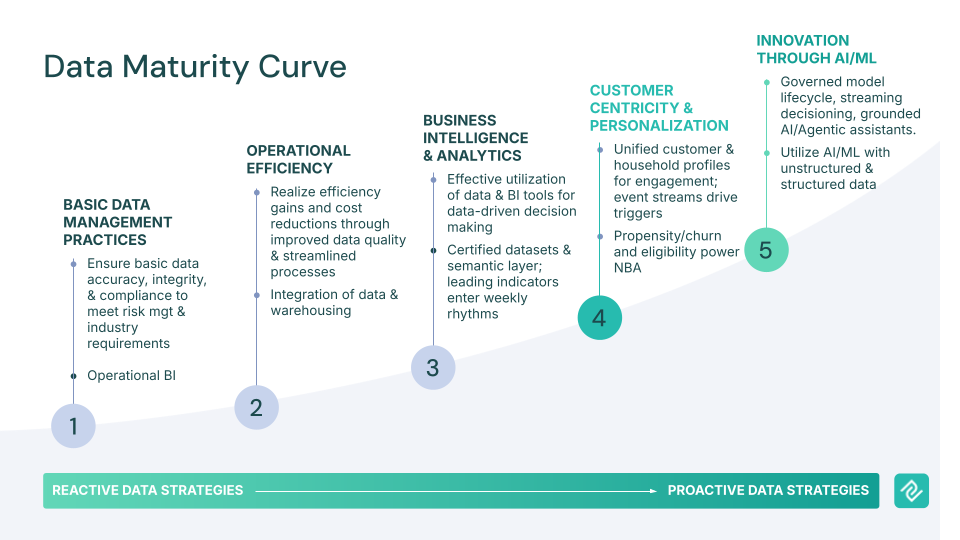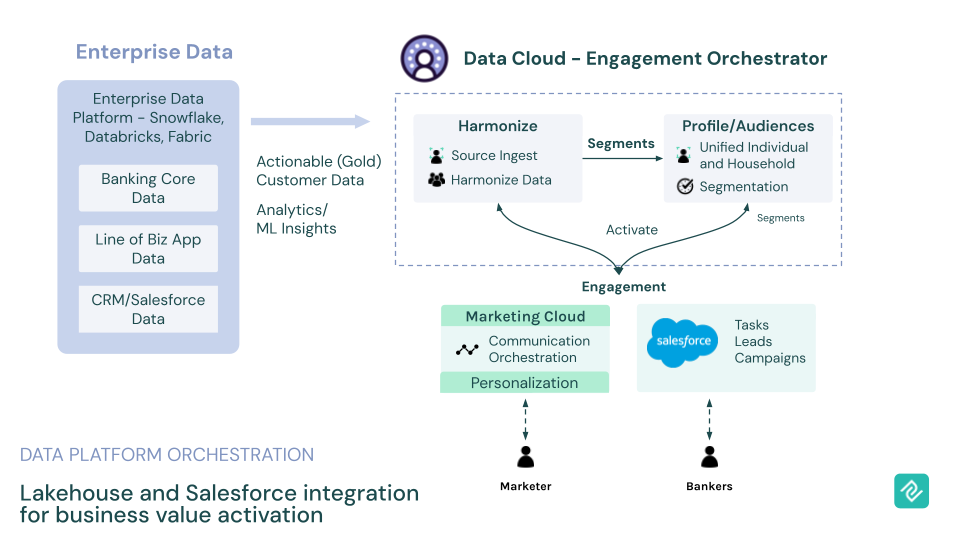At Dreamforce 2025, Zennify Founder and Chief Innovation Officer Manvir Sandhu was joined onstage by Jay Gittings, VP of Enterprise Architecture and Business Applications at Lighthouse Credit Union, Michael Sabado, VP, IT Enterprise Platforms at Golden 1 Credit Union, and Laura Sullivan Ethridge, former CMO of Hancock Whitney and Zennify Advisor, for a conversation on what really drives value from modern data investments. Together, they explored how financial institutions are orchestrating Databricks, Snowflake, Azure, and Data 360 (formally Data Cloud) to accelerate growth and AI.
Success with modern data platforms shouldn't be defined by their feature set, but by the outcomes they produce. Banks and credit unions are investing heavily in Databricks, Snowflake, Azure, and Data 360. But where they often trip up, is in making the data platform the strategy. The winners are orchestrating these tools around a clear set of business outcomes, deposits, loyalty, and scale and delivering value in 90-day increments, not 3–5 year roadmaps.

.png)

